You may also like:
Why This Guide Matters
Every day, thousands of people lose their hard-earned money to crypto scams.
These schemes are getting more sophisticated, hiding behind professional websites, fancy technology words, and promises that sound almost believable.
I’ve analyzed dozens of these platforms over the years.
While each one has its own name and story, they all follow the same playbook.
Once you understand this playbook, you can protect yourself and the people you care about.

This article will teach you exactly what to look for when someone tries to sell you on the “next big crypto opportunity.”
Consider it your shield against financial disaster.
Understanding the Basic Trick
Before we dive into specific warning signs, you need to understand the core deception that powers most crypto scams.
It’s called a Ponzi scheme, named after Charles Ponzi who invented this trick over a hundred years ago.
The concept is beautifully simple and devastatingly effective.
Here’s how it works.
Imagine I tell you that I have a magic investment system.
You give me one thousand dollars, and I promise to return fifteen hundred dollars in three months.
You think about it and decide to try.
Three months later, I actually give you fifteen hundred dollars.
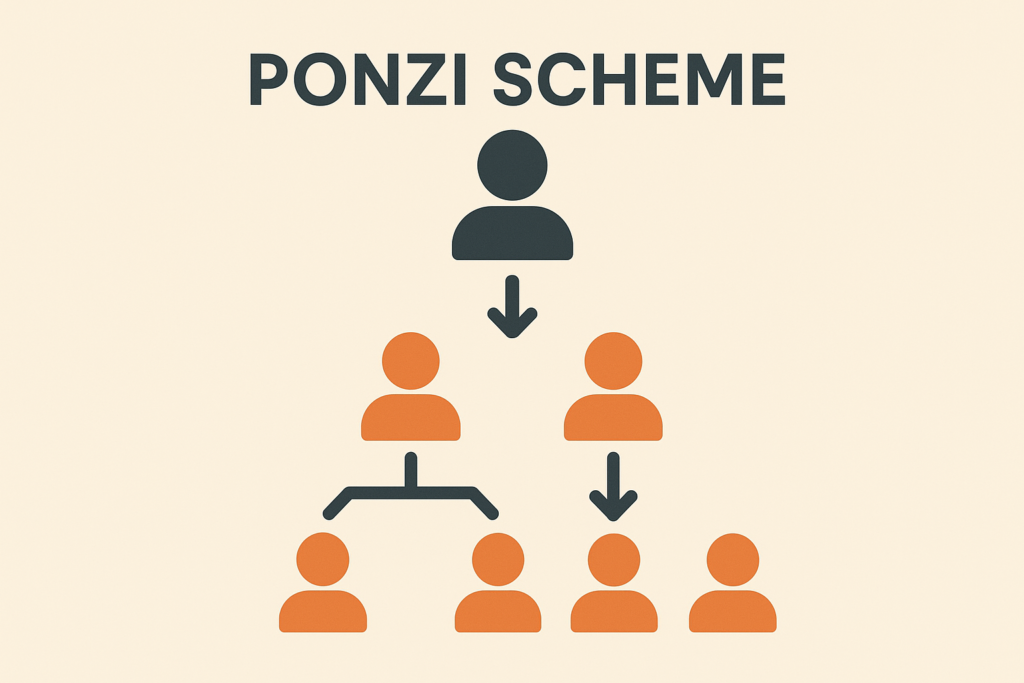
You’re thrilled! You tell your friends.
But here’s the secret.
I didn’t make that extra five hundred dollars by investing your money.
I got it from the next person who joined after you.
When that person wants their payout, I’ll use money from the third person.
And so on.
This works perfectly as long as new people keep joining.
The early investors get paid, tell everyone how great it is, and more people rush to join.
But eventually, the flow of new members slows down.
When that happens, there’s no money left to pay everyone.
The system collapses.
The person running the scheme disappears with whatever money remains.
Most participants lose everything.
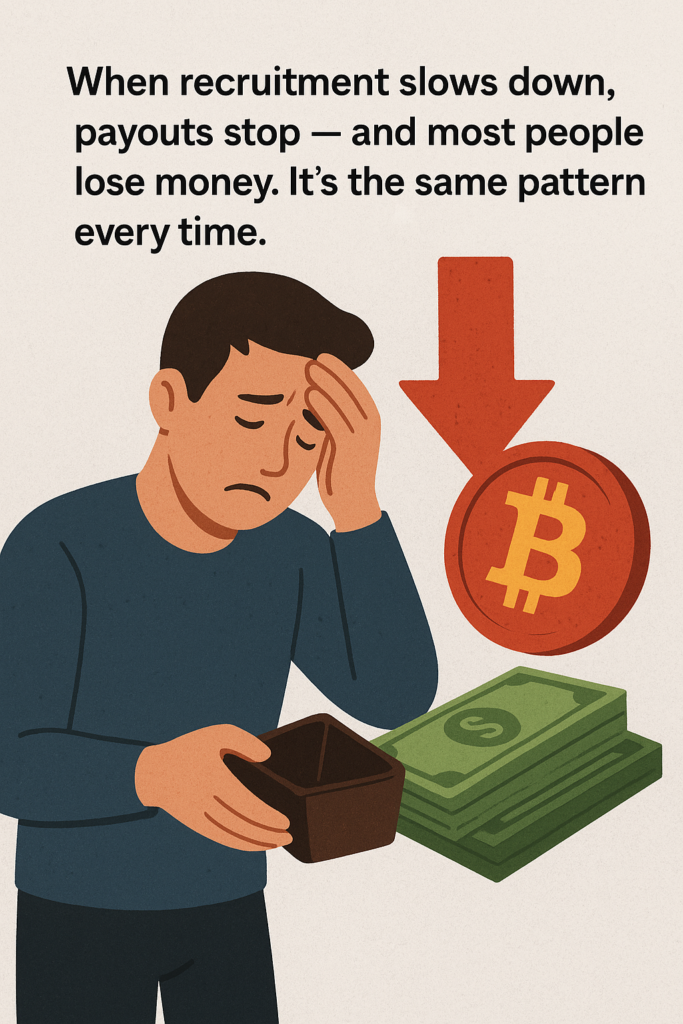
Every single crypto scam I’ve reviewed follows this exact pattern.
They just dress it up with different words like
- “staking,”
- “AI trading,”
- “smart contracts,” or
- “blockchain technology.”
Don’t let the fancy terms fool you.
If the only money coming in is from new investors, it’s a Ponzi scheme, period.
The Ten Warning Signs Every Beginner Should Know
Now that you understand the basic trick, let’s talk about how to spot these schemes before you lose money.
I’ve identified ten red flags that appear again and again.
The more of these you see, the faster you should run away.
Warning Sign One: Guaranteed or Unrealistic Returns
Real investment markets go up and down.
Nobody, not even the smartest investors in the world, can guarantee profits.
If someone tells you they can, they’re lying.
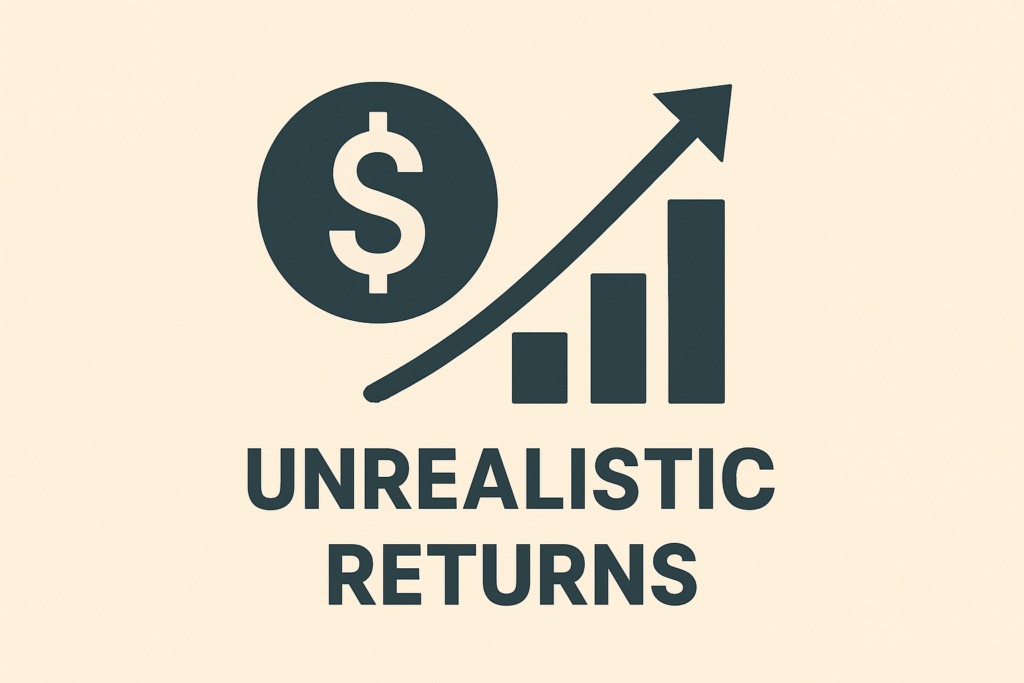
Be especially suspicious of specific percentage promises.
Phrases like:
- “earn three percent every single day” or
- “guaranteed two hundred and fifty-six percent returns in one hundred and thirty-five days”
should immediately set off alarm bells in your mind.
These numbers are mathematically impossible to sustain through legitimate means.
Think about it this way.
If someone truly had a system that could double or triple your money every few months with no risk, why would they need your money?
They could take out a loan, use their system, become billionaires, and keep all the profits for themselves.
The fact that they’re asking for your money proves the system doesn’t really work.
Warning Sign Two: You Must Recruit Others to Earn
This is perhaps the clearest warning sign of all.
Legitimate businesses make money by selling products or services to customers.
Scams make money by recruiting new victims.
These schemes typically use a structure called multi-level marketing, or MLM for short.

You earn money not just from your own investment, but from bringing in other people.
Then you earn from the people they bring in.
And so on, creating multiple levels below you.
The moment someone tells you that your earnings depend on recruiting friends and family, ask yourself a critical question.
If this platform truly makes money from trading, artificial intelligence, or whatever they claim, why do they need me to recruit anyone?
The answer is simple.
They don’t make money from trading or AI.
They make money from recruitment.
You’re not joining an investment.
You’re joining a pyramid that will eventually collapse.
Warning Sign Three: Anonymous or Hidden Leadership
Legitimate companies are proud to tell you who runs them.
They have real names, real faces, and verifiable backgrounds you can research.
If you can look up the CEO on LinkedIn, read about their previous companies, and verify their education and experience, that’s a good sign.
Scam platforms do the opposite.

They hide who really owns and controls them.
You might see a name mentioned somewhere, but when you search for that person, you find nothing.
- No social media presence.
- No history of previous successful businesses.
- No way to verify they’re even real.
Sometimes the domain registration is private, meaning the owner’s identity is deliberately concealed.
Other times they might list a physical address, but when you investigate, it turns out to be a random office building with no connection to the company.
Remember this rule.
When someone asks you to invest thousands of dollars but won’t tell you their real identity, that’s not privacy, that’s preparation for theft.
They’re hiding because they plan to disappear with your money eventually.
Warning Sign Four: No Real Product or Service
Ask yourself a simple question.
- What does this company actually do?
- What do they sell to regular customers who aren’t investors?
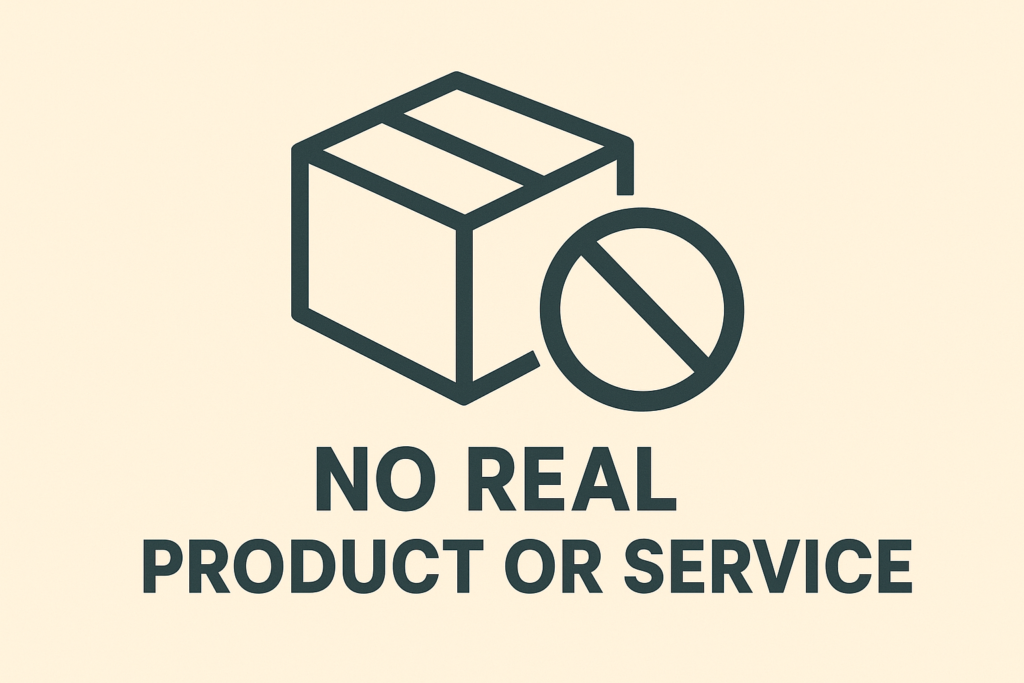
In a legitimate business, the answer is clear.
Apple sells phones.
Netflix sells entertainment.
Google sells advertising.
These companies make money from customers who want their products, not from people hoping to get rich.
Scam platforms are different.
When you dig into what they actually do, you realize the only thing they sell is membership in the investment opportunity itself.
There’s no external customer.
There’s no genuine product creating value.
The only money flowing into the system comes from new members joining.
This is why they often use vague language.
They might say they use
- “advanced algorithms” or
- “cutting-edge AI technology” or
- “revolutionary smart contracts,”
But they never explain exactly how these things generate profit.
They can’t explain it because it doesn’t exist. The profits come from you, not from any real business activity.
Warning Sign Five: No Regulatory License or Registration
In most countries, if you want to offer investment opportunities to the public, you must register with financial regulators.
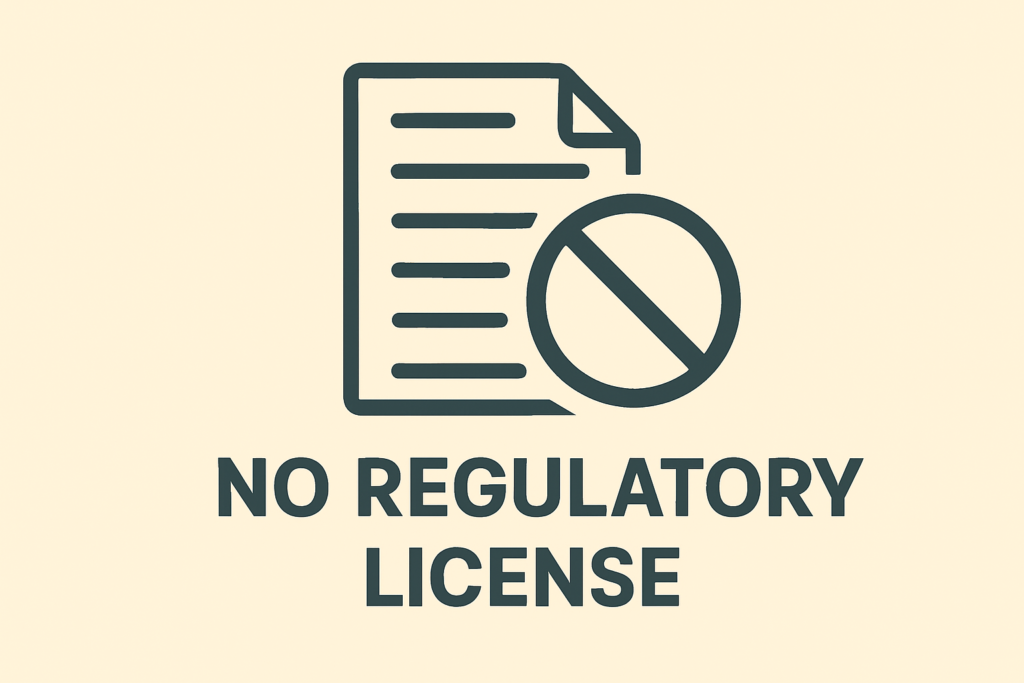
This isn’t optional.
It’s the law.
These regulations exist to protect people like you.
They require companies to be transparent about risks, prove they have the money they claim, and follow rules that prevent fraud.
Scam platforms avoid registration for an obvious reason.
If they tried to register, regulators would immediately see through their scheme and shut them down.
So they operate in the shadows, unregistered and unlicensed.
Before investing in any platform, take five minutes to check if they’re registered.
Most countries have websites where you can search for licensed investment firms.
- In the United States, you can check the Securities and Exchange Commission website.
- In Australia, there’s ASIC.
- In the United Kingdom, it’s the Financial Conduct Authority.
Every country has something similar.
If you can’t find the company registered anywhere, that’s a massive red flag.
And if they claim to be registered but you can’t verify it, that’s even worse because it means they’re actively lying to you.
Warning Sign Six: Pressure to Act Quickly
Scammers know that research is their enemy.
The more time you spend investigating, the more likely you’ll discover their fraud.
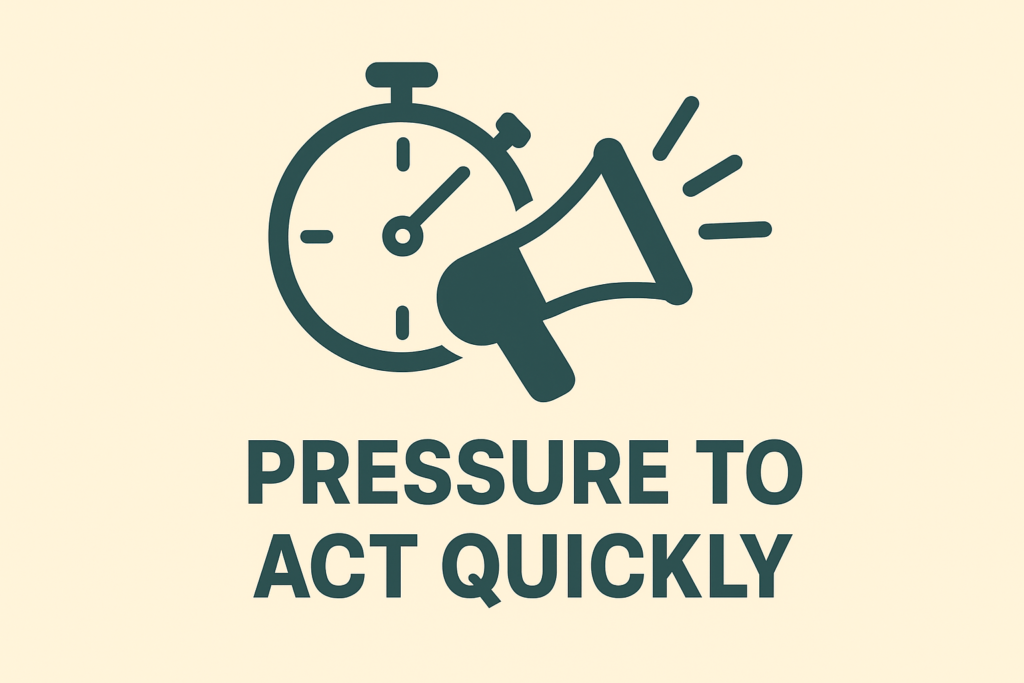
So they create artificial urgency to make you invest before you can think clearly.
You might see messages like
- “only fifty spots remaining” or
- “this offer expires in twenty-four hours” or
- “prices going up next week.”
These tactics are designed to bypass your rational thinking and trigger fear of missing out.
Here’s the truth.
Real investment opportunities don’t disappear overnight.
If something is genuinely good, it will still be good next week, next month, or next year.
Taking time to research never hurts a legitimate opportunity, but it always exposes scams.
Whenever someone pressures you to invest immediately, slow down.
That pressure itself is evidence of fraud.
Tell them you need time to think and research.
A legitimate company will respect this.
A scammer will get angry or defensive.
Warning Sign Seven: Using Trendy Buzzwords Without Real Substance
Scammers love to use whatever is popular at the moment.
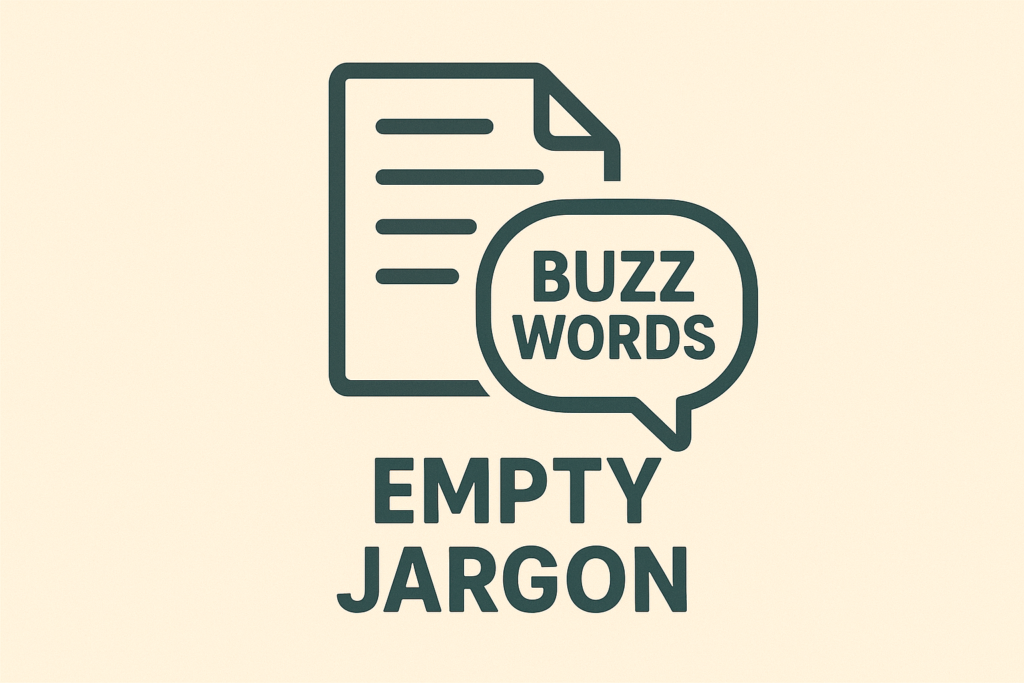
A few years ago, every scam claimed to use “blockchain.”
Now they all mention
- “artificial intelligence” or
- “AI-powered systems.”
These words sound impressive, but watch what happens when you ask for details.
- How exactly does their AI work?
- What specific blockchain do they use?
- Can they show you technical documentation or explain their algorithm?
Legitimate tech companies can answer these questions.
They publish white papers.
They have demos you can try.
They explain their technology in detail because they’re proud of what they built.
Scam platforms give vague, confusing answers or change the subject.
They use buzzwords as decoration, not as actual technology.
It’s like putting a Ferrari sticker on a bicycle and calling it a sports car.
Before investing in any platform that claims to use advanced technology, demand specifics.
If they can’t or won’t provide them, they’re hiding the fact that the technology doesn’t really exist.
Warning Sign Eight: Testimonials That Sound Too Perfect
Visit almost any scam website and you’ll see testimonials from supposedly happy members.
- “I made ten thousand dollars in my first month!” or
- “This changed my life!” or
- “Finally, a platform that delivers!”
These testimonials are usually fake or carefully selected.

Here’s what you never see.
- You never see the complaints from people who couldn’t withdraw their money.
- You never see the frustrated emails to customer service that got no response.
- You never see the people who lost everything when the platform collapsed.
Real reviews are mixed.
Even the best products and services have some unhappy customers.
When every single review is glowing and perfect, something is wrong.
To find honest opinions, look beyond the company’s own website.
Search for the platform name plus words like “scam” or “review” or “complaint.”
Check independent review sites.
Look for patterns in what people are saying.
If you find multiple complaints about withdrawal problems or customer service that disappeared, pay attention to those warnings.
Warning Sign Nine: Complex Compensation Plans That Confuse You
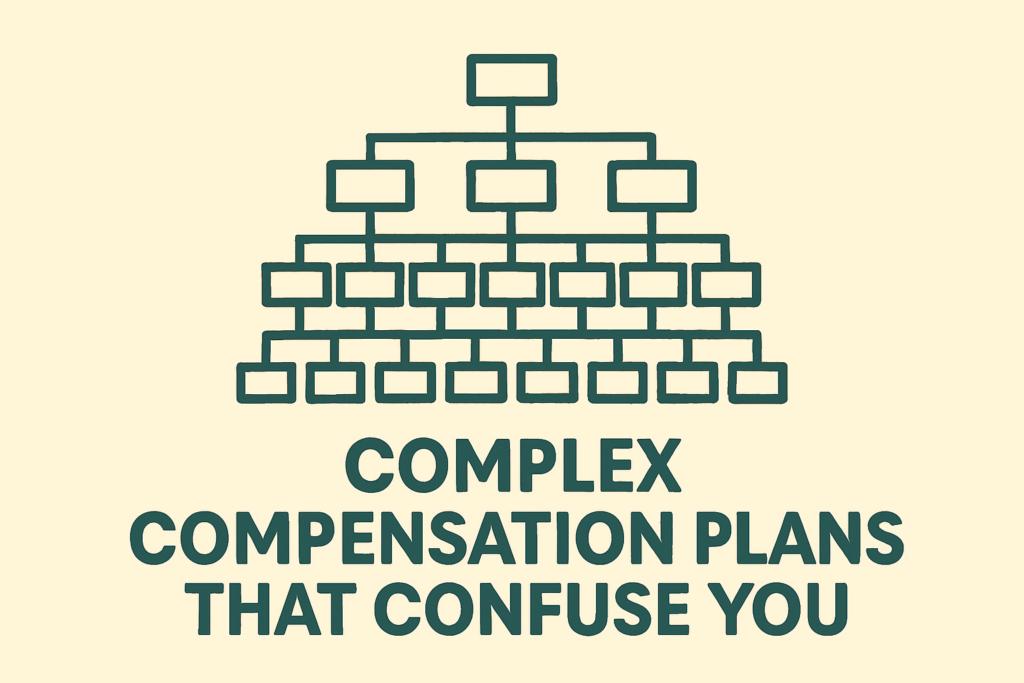
Have you ever noticed how some of these platforms have incredibly complicated earning structures?
They talk about ranks, levels, binary trees, matching bonuses, infinity bonuses, and dozens of other terms that make your head spin.
This complexity is deliberate.
It’s designed to confuse you so you can’t clearly see how the money actually flows.
When something is truly legitimate, the business model is usually simple enough to explain in a few sentences.
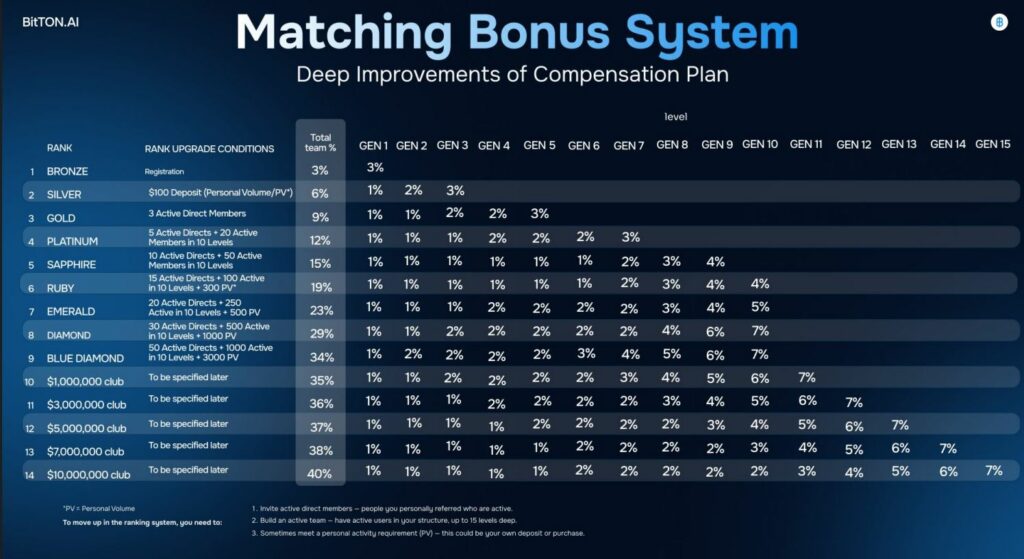
If you can’t understand how you’re supposed to make money even after reading their explanation several times, that’s not because you’re not smart enough.
It’s because they made it confusing on purpose.
Clear communication is a sign of legitimacy. Deliberate confusion is a sign of fraud.
Warning Sign Ten: Difficulty Withdrawing Your Money
This is often the moment when people realize they’ve been scammed, but by then it’s too late. You try to withdraw your funds and suddenly encounter problems.
- Maybe the website says there are “technical issues.”
- Maybe they tell you that you need to invest more money first before you can withdraw.
- Maybe they force you to accept payment in their own worthless token instead of real cryptocurrency.
- Maybe customer service stops responding entirely.
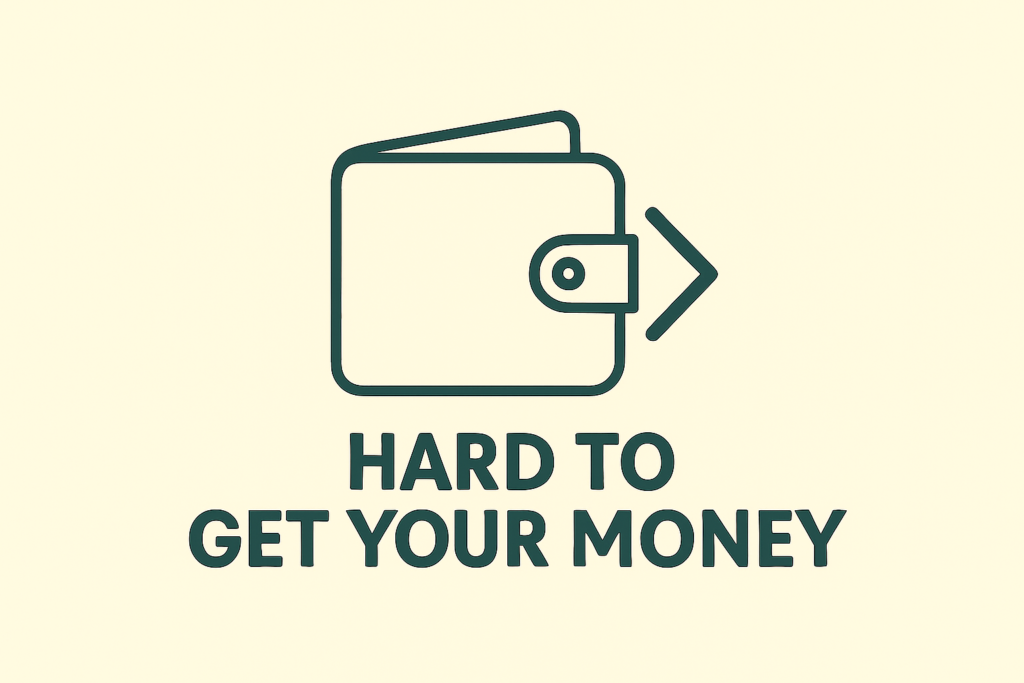
These tactics serve one purpose—to keep your money in their system as long as possible before the inevitable collapse.
Every day they can delay your withdrawal is another day they can use your money to pay other investors and recruit new victims.
Before investing significant money in any platform, test their withdrawal process with a small amount.
If you can’t withdraw easily and quickly, don’t invest more.
And if they won’t let you test withdrawals because of minimum amounts or lock-up periods, consider that a warning sign itself.
The Life Cycle of a Typical Scam
Understanding how these schemes typically unfold can help you recognize where you are in the timeline if you’re already involved.
In the first few months, everything seems perfect.
Early investors put in money and actually receive returns.
These returns don’t come from real profits, but from the money new investors are contributing. The early investors are thrilled and tell everyone they know.
During months four through six, word spreads quickly.
The early investors’ enthusiasm brings in a wave of new participants.
Some early investors even withdraw profits, which makes the scheme seem more legitimate. This is the period when the scam grows fastest.
Everyone sees people making money and wants their share.
Around months seven through nine, growth begins to slow.
The platform needs more and more new money to pay existing promises.
They might introduce new features or plans to attract investors, but it’s getting harder.
Some people might start noticing warning signs or encountering withdrawal delays.
After about ten months, collapse becomes inevitable.
New money has mostly stopped flowing in.
The platform can’t pay everyone what they were promised.
Excuses begin.
- “Technical difficulties.”
- “Market conditions.”
- “Banking problems.”
Then one day, often suddenly, the website goes offline.
The social media accounts stop posting.
Customer service disappears. And with them goes your money.
Not every scam follows this exact timeline.
Some last longer if they’re particularly good at recruiting (for example, Novatech FX).
Others collapse faster if they’re too greedy or if authorities shut them down.
But the pattern is always the same:
- early success,
- rapid growth,
- slowing momentum, and
- inevitable collapse.
What to Do Right Now
If you’re reading this before investing in a suspicious platform, congratulations.
You just saved yourself potentially thousands of dollars and enormous emotional stress.
Keep researching.
Ask hard questions.
And if you see multiple red flags from this article, walk away.
If you’re reading this after already investing, here’s what you should do immediately.
First, try to withdraw whatever money you can right now.
Don’t wait.
Don’t invest more hoping to recover losses.
Just try to get out what you can while the platform still exists.
Second, stop recruiting others.
Even if you genuinely believed the platform was legitimate, continuing to bring in others after learning the truth makes you part of the problem.
Don’t let guilt or financial desperation push you to harm your friends and family.
Third, document everything.
Save all emails, screenshots, transaction records, and communications.
If the platform collapses, this documentation will be important for reporting to authorities or potential legal action.
Fourth, report the platform to your local financial regulator and police.
Even if you don’t think anything will come of it, reports help authorities track scams and potentially shut them down before more people are hurt.
Finally, learn from this experience.
You’re not stupid for falling for a scam.
These schemes are designed by professionals who understand psychology and manipulation. But now you know what to look for.
Use this knowledge to protect yourself and others in the future.
A Simple Test You Can Use
Before investing in any crypto platform, ask yourself these five questions.
If you can’t confidently answer yes to all of them, don’t invest.
1) Can I clearly explain where the profits come from, and does that explanation not involve new investor money?
- If the business model only works because new people keep joining, it’s a Ponzi scheme.
2) Is there a real, usable product or service that people outside the investment opportunity would want to buy?
- If the only product is the investment itself, that’s a major red flag.
3) Can I verify who runs this platform, including checking their backgrounds and confirming they’re real people with real track records?
- If ownership is hidden or unverifiable, assume the worst.
4) Are the promised returns realistic for the actual risk involved, or do they sound too good to be true?
- Remember, if returns seem impossible, they probably are impossible.
5) Is this platform properly registered and licensed with financial regulators in at least one legitimate jurisdiction?
- If not, you have zero legal protection when things go wrong.
Five simple questions.
If you can’t say yes to all five, protect your money and walk away.
Final Thoughts
The cryptocurrency space has genuine innovation and legitimate opportunities.
- Real blockchain technology is solving real problems.
- Real companies are building valuable products.
- Real investors are making real returns through careful research and reasonable risk-taking.
But alongside these legitimate opportunities are countless scams designed to steal your money.
They prey on hope, excitement, and the fear of missing out.
They use sophisticated websites, convincing testimonials, and complex language to seem legitimate.
Your best defense is education.
Learn to recognize the patterns.
Ask hard questions.
Demand transparency.
And remember that if something sounds too good to be true, it almost certainly is.
Nobody is going to make you rich with guaranteed returns and no risk.
Anyone who promises that is lying to you.
Real wealth comes from real work, real skills, and real investments in legitimate opportunities. It takes time, patience, and accepting reasonable levels of risk.
Protect yourself.
Protect your family.
And when you spot a scam, speak up and help others avoid the same trap.
Together, we can make the crypto space safer for everyone.
Stay informed, stay skeptical, and stay safe.
